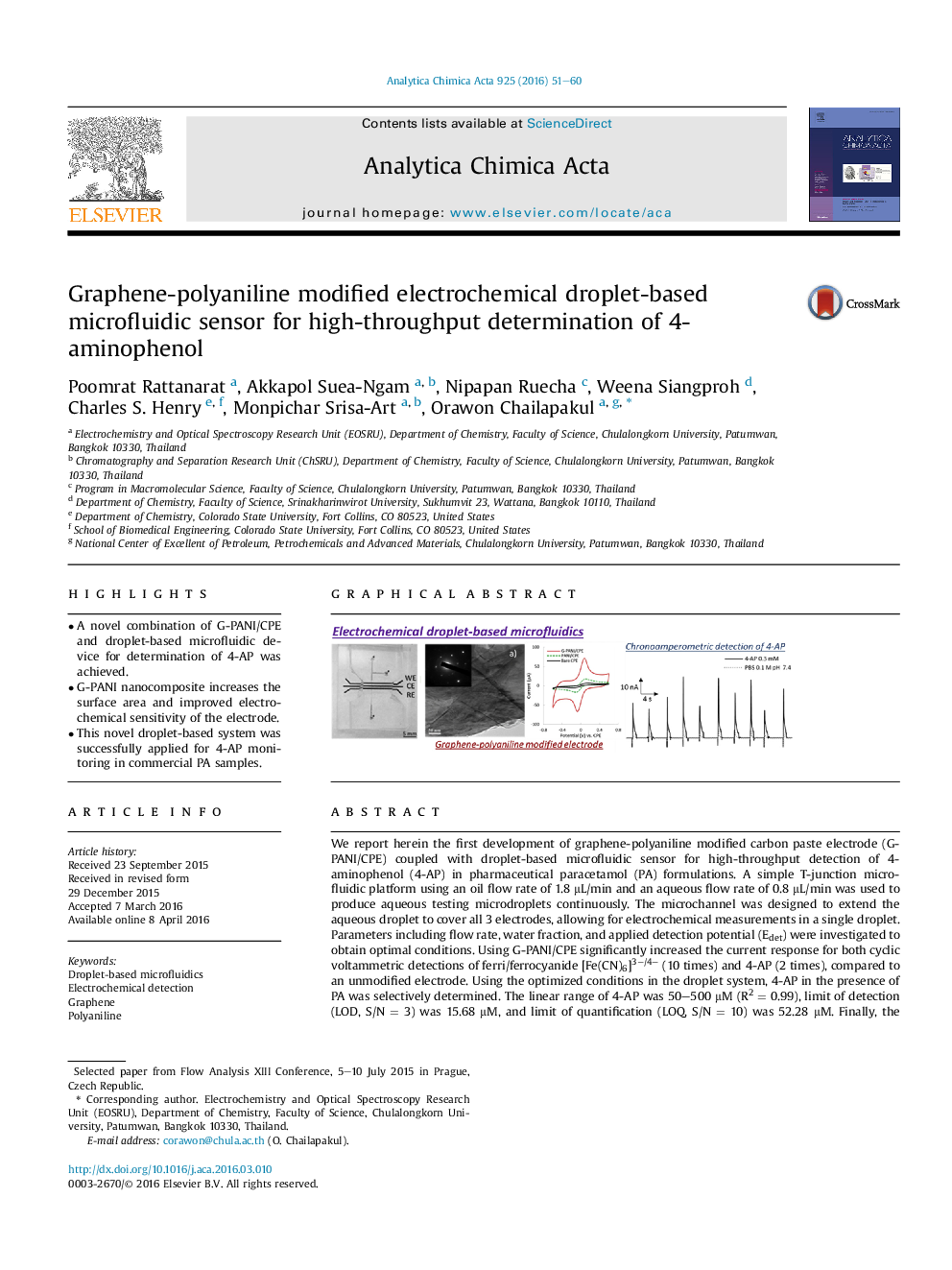| کد مقاله | کد نشریه | سال انتشار | مقاله انگلیسی | نسخه تمام متن |
|---|---|---|---|---|
| 1162771 | 1490907 | 2016 | 10 صفحه PDF | دانلود رایگان |
• A novel combination of G-PANI/CPE and droplet-based microfluidic device for determination of 4-AP was achieved.
• G-PANI nanocomposite increases the surface area and improved electrochemical sensitivity of the electrode.
• This novel droplet-based system was successfully applied for 4-AP monitoring in commercial PA samples.
We report herein the first development of graphene-polyaniline modified carbon paste electrode (G-PANI/CPE) coupled with droplet-based microfluidic sensor for high-throughput detection of 4-aminophenol (4-AP) in pharmaceutical paracetamol (PA) formulations. A simple T-junction microfluidic platform using an oil flow rate of 1.8 μL/min and an aqueous flow rate of 0.8 μL/min was used to produce aqueous testing microdroplets continuously. The microchannel was designed to extend the aqueous droplet to cover all 3 electrodes, allowing for electrochemical measurements in a single droplet. Parameters including flow rate, water fraction, and applied detection potential (Edet) were investigated to obtain optimal conditions. Using G-PANI/CPE significantly increased the current response for both cyclic voltammetric detections of ferri/ferrocyanide [Fe(CN)6]3−/4− (10 times) and 4-AP (2 times), compared to an unmodified electrode. Using the optimized conditions in the droplet system, 4-AP in the presence of PA was selectively determined. The linear range of 4-AP was 50–500 μM (R2 = 0.99), limit of detection (LOD, S/N = 3) was 15.68 μM, and limit of quantification (LOQ, S/N = 10) was 52.28 μM. Finally, the system was used to determine 4-AP spiked in commercial PA liquid samples and the amounts of 4-AP were found in good agreement with those obtained from the conventional capillary zone electrophoresis/UV–Visible spectrophotometry (CZE/UV–Vis). The proposed microfluidic device could be employed for a high-throughput screening (at least 60 samples h−1) of pharmaceutical purity requiring low sample and reagent consumption.
Figure optionsDownload as PowerPoint slide
Journal: Analytica Chimica Acta - Volume 925, 21 June 2016, Pages 51–60
